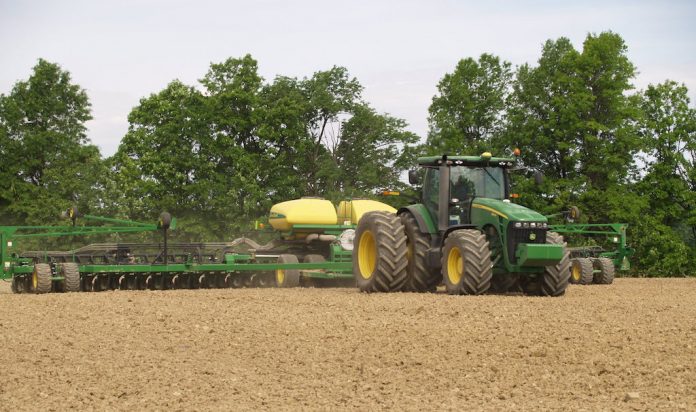By Chris Zoller and Elizabeth Hawkins
A new program of the Ohio State University College of Food, Agricultural, and Environmental Sciences, eFields, is dedicated to promoting production agriculture through the use of on-farm research.
The program began in 2017 and in 2018 grew to include more than 5,000 acres in 95 on-farm research trials in 25 counties.
Research trials in 2018 were conducted on corn, soybeans, and forages. Corn on-farm trials included high-speed planting, manure sidedress, nitrogen rate, source, and timing, starter fertilizer, and seeding rates. Soybean trials included fungicide timing, multi-variety, fertilizer, and seeding rates. Forage research focused on stockpiling to extend the grazing season.
Results of the 2018 on-farm trials are published in a nearly 200-page publication available from many Extension offices or online at https://digitalag.osu.edu/efields.
Seeding rates
Corn seeding rate studies were conducted at 10 locations in 2018. The objective of these studies was to understand the yield impact of varying seeding rates.
Seeding rates ranged from 22,000 seeds per acre to 44,000 seeds per acre. The average emergence rate was 96% and the lowest seeding rate was within 88 percent of relative yield.
Variation in yield was caused by differences in location and seeding rates, and there was a significant response to corn seeding rate at nine of 10 sites.
Twenty soybean seeding rates studies were conducted in 14 counties in 2018. The objective of the soybean seeding rate study was to understand the yield impact of varying seeding rates. Rates included a low of 50,000 seeds per acre to a high of 240,000 seeds per acre. Across all sites, emergence was 83%.
Variation in yield was likely due to differences in location, not in seeding rates.
In addition, there was a significant response to seeding rate at nine of the 20 soybean sites in 2018. Have you evaluated your soybean seeding rates? This may provide an opportunity to reduce rates and still maintain yield.
Starter fertilizer
The starter fertilizer study was designed to measure corn yield effect from added starter fertilizer, sulfur, and zinc. Highlights: Grain moisture levels at harvest were highest in the treatment without starter fertilizer and there was no statistical difference between 28% only; 28% and P; and 28%, P, S, and zinc.
In addition, the 28% and P showed a 37-cent/acre return on investment. The other treatments resulted in negative return over no starter fertilizer. Findings are summarized in the adjacent chart.
Forage quality
The objective of the forage research project was to determine the effect of urea, urea plus a nitrogen stabilizer, and ammonium sulfate on dry matter accumulation and forage quality. The study was conducted in Monroe, Noble, and Morgan counties.
Results indicated there were significant differences in yield between the control and all of the treatments for the three-site average, but not between the treatments.
In other words, adding nitrogen yielded more forage than the plots that did not receive nitrogen. It is important to calculate application costs, consider the costs and time to feed stored feed and the utilization of the stockpiled forages and the stored feed. In many cases, stockpiling is a viable option to reduce costs and save times.
The eFields program is an exciting opportunity for farmers to conduct on-farm research from which they and other farmers can benefit. If interested in being an eFields cooperator, contact your county Extension educator.















